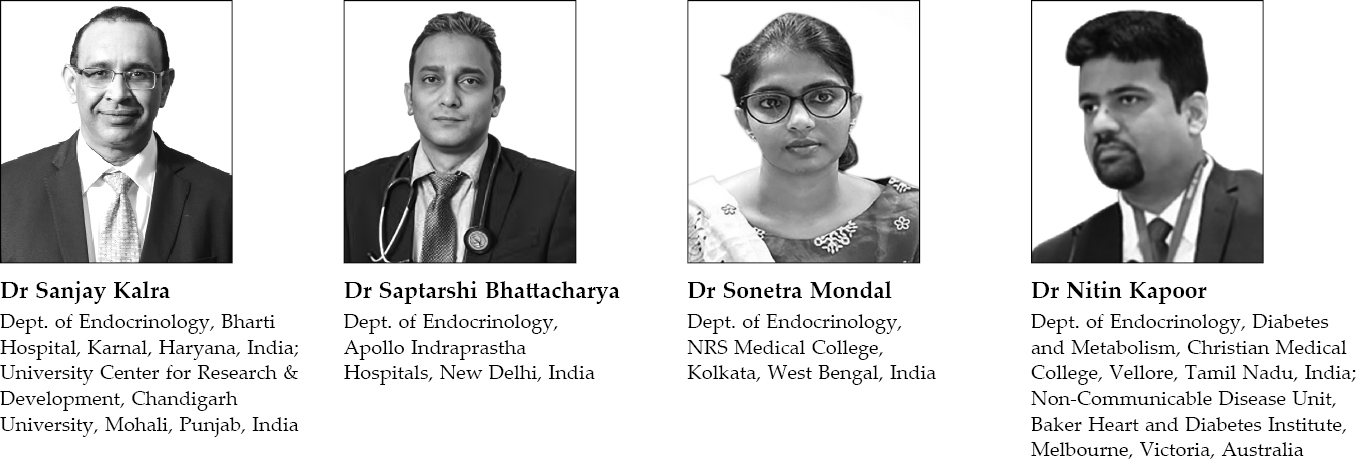
Global warming impacts our environment, and our health, in multiple ways1. While global warming garners global attention, another challenge continues to grow as a disaster in slow motion. This is the pandemic of diabetes. Similar to global warming, ‘glucose warming’ or the diabetes epidemic, has affected every country on earth2.
Statistics for global warming and glucose warming exhibit striking similarities. The difference is just that climatic change and weather-related disasters are headlined in media, while diabetes-related disease and death are usually not considered newsworthy enough. This is in spite of the fact that diabetes kills, and maims more people than natural disasters do.
Just as global-warming is associated with multiple climatic and weather changes, glucose warming or the diabetes epidemic represents a multifaceted challenge. Managing diabetes means not just keeping glucose levels under control, but ensuring optimal control of blood pressure, cholesterol, and body weight3.
Put together, these four targets are known as the metabolic quadriga. Apart from these, diabetes is linked with various complications such as cardiovascular disease, kidney impairment, fatty liver, and obstructive sleep apnea (OSA). The complex presentation of diabetes can be explained by its equally complex pathophysiology, or development. Many factors, including deficient production as well as function of the hormone insulin, and inadequate performance of the incretin system, lead to diabetes4.
Advances in diagnosis and treatment now allow affected persons to live a healthy life with diabetes. Timely screening, diagnosis, and monitoring of diabetes are essential if optimal health is to be achieved, and maintained.
Newer drugs, which work on all these causative factors, allow multifaceted management of diabetes. By controlling glucose as well as body weight, improving lipids and blood pressure, and reducing the risk of heart and kidney disease, they improve the overall health of the person living with diabetes. Modern medications such as glucagon-like peptide-1 receptor agonists and sodium-glucose cotransporter-2 inhibitors have also been reported to improve liver health and reduces the symptoms of OSA. They have also been found to reduce the risk of cardiovascular disease and improve survival5,6.
Thus, such medications can be viewed as a defense against glycemic warming and its long-term effects. Timely use of these drugs will help reduce the impact of uncontrolled diabetes and its various complications. This benefit will be felt not only at an individual level, but will accrue to the society and nation as well.
We need to view global and glycemic warming, as a global glycemic warning, and act against it; we need to manage diabetes in a timely, and appropriate, manner.
- Lenton TM, Xu C, Abrams JF, Ghadiali A, Loriani S, Sakschewski B, et al. Quantifying the human cost of global warming. Nat Sustainabil. 2023;6(10):1237-47.
- Ong KL, Stafford LK, McLaughlin SA, Boyko EJ, Vollset SE, Smith AE, et al; GBD 2021 Diabetes Collaborators. Global, regional, and national burden of diabetes from 1990 to 2021, with projections of prevalence to 2050: a systematic analysis for the Global Burden of Disease Study 2021. Lancet. 2023;402(10397):203-34.
- Kalra S, Kapoor N, Jacob JJ. Management of obesity: finding the metabolic magic wand. Indian J Endocrinol Metab. 2022;26(6):499-500.
- Ojo OA, Ibrahim HS, Rotimi DE, Ogunlakin AD, Ojo AB. Diabetes mellitus: From molecular mechanism to pathophysiology and pharmacology. Med Novel Technol Dev. 2023;19:100247.
- Chong K, Chang JK, Chuang LM. Recent advances in the treatment of type 2 diabetes mellitus using new drug therapies. Kaohsiung J Med Sci. 2024;40(3):212-20.
- Kalra S, Das AK, Priya G, Ghosh S, Mehrotra RN, Das S, et al. Fixed-dose combination in management of type 2 diabetes mellitus: expert opinion from an international panel. J Family Med Prim Care. 2020;9(11):5450-7.